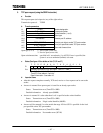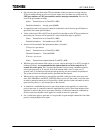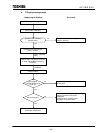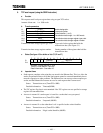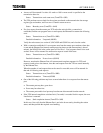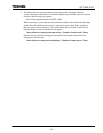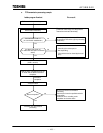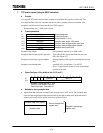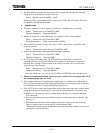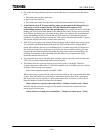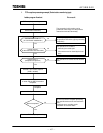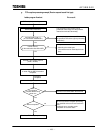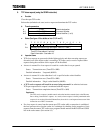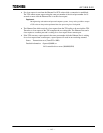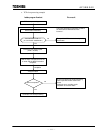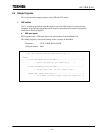
105
6 F 3 B 0 3 6 2
• The T2N checks for register area allocation of the reception data size plus one word and
returns an error if the register area does not exist.
Status: Boundary error (TermSTS = 0AH)
In this case, data is not transferred to the register area, and the data is discarded. The data is
not retained in the Ethernet Port either.
e. Important items
• An error is returned if a receive request is issued for a socket that is not yet opened.
Status: Transmission error (TermSTS = 0BH)
Detailed information: Unopened (0081H)
• An error is returned if a value other than 1 to 8 is specified as the socket identifier.
Status: Transmission error (TermSTS = 0BH)
Detailed information: Illegal socket identifier (0082H)
• An error will be returned if a value of 0 words or 1001 or more words is specified as the
reception data size.
Status: Transmission word count error (TermSTS = 09H)
• An error will be returned if the reception timeout time is exceeded.
Status: Transmission error (TermSTS = 0BH)
Detailed information: Timeout(0020H)
• If a close request from the remote port TCP socket has arrived while a connection is
established, and the user program issues a receive request, the Ethernet Port returns the
following error. Issuing a receive request in the receive wait state will also result in the
following error being returned.
Status: Transmission error (TermSTS = 0BH)
Detailed information: Unopened (0081H)
Verify the socket status (see section 6.3) RCLOSE and CONN bits, and close the socket.
• Allocate a reception data storage register area per a socket with a size equal to the size of
the transmission data plus one word.
• If the reception data size is larger than the reception data size of the receiving Ethernet Port,
the size of transmission data for the single operation and the size of reception data at that time
is transmitted to the T2N’s reception data storage register area.
• Since a TCP receive request merely places the socket in the receive wait state, it cannot detect
remote ports that are not responding. Use one of the following methods to prevent this state.
• Monitor for a no-response state by sending data periodically over a separate (different)
TCP connection.
• Execute a remote port presence verification request for the remote port periodically. (See
section 7.3.)
• Monitor the interval between data receptions when data is being received periodically.
(Receive request issued first type: specify a limited timeout limit.)
(Socket status monitoring type: monitor the interval between points when the received text
present bit is set to the on state.)



